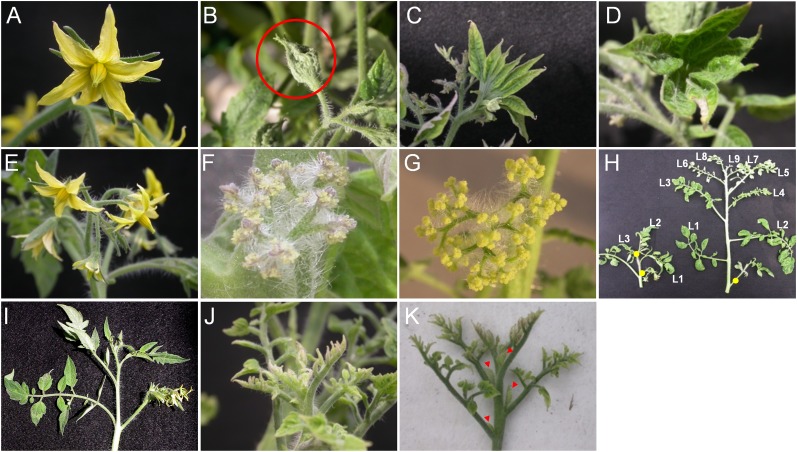Fig. 1.
Symptoms of potato purple top (PPT) phytoplasma infection in tomato and phenotypes of loss-of-function tomato lines. (A) A normal flower from a mock-inoculated healthy plant. (B) A typical big bud (BB) (marked with a red circle) structure formed by a PPT phytoplasma-infected plant. Occasionally, BB sepals open like a fan (C) or a trumpet (D). (E) An inflorescence from a mock-inoculated healthy plant. (F) Cauliflower-like inflorescence (CLI). (G) Highly branched inflorescence phenotype of anantha (an) tomato mutant. (H) Disrupted sympodial growth pattern (DSGP) (Right) vs. the normal three leaves–one inflorescence sympodial growth pattern (Left). In DSGP, more than nine, instead of three, leaves are present in a single sympodial unit. Individual leaves are numbered and inflorescence branches are marked by yellow dots. (I) An auxiliary shoot from a mock-inoculated healthy plant. (J) Witches’-broom (WB) growth induced by PPT phytoplasma infection. (K) WB growth shown in J but opened to facilitate viewing of auxiliary shoots (indicated by red arrowheads).

